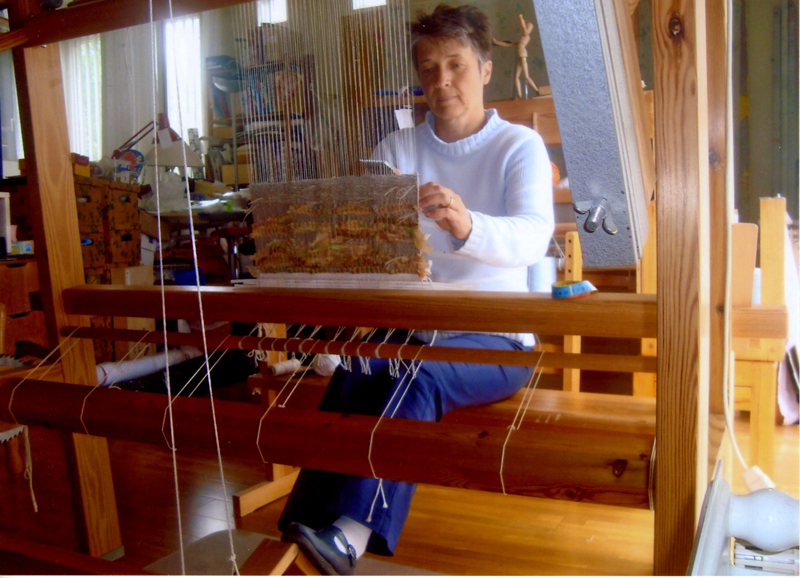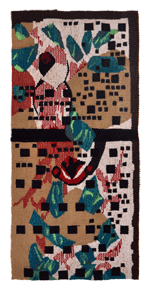
Previous artist Next artist
While I was studying graphic art and design at the Académie Royale des Beaux-Arts de Bruxelles, I had the opportunity to investigate tapestry cartoons (the preliminary painted designs for tapestries). The creation of these cartoons was a skill about which, until then, I had known nothing. I decided that I wanted to discover the technical constraints that the weaving of tapestry imposed on the creation of the cartoon. This is what eventually led me to learn how to weave. The connection between the graphic composition (of the cartoon) and its textile interpretation (in the tapestry) using the materials specific to tapestry-making immediately interested me and simulated my own creativity.
In the past, the work of the cartoon painter and that of the weaver of the tapestry were distinct and clearly defined. Some fifty years ago, cartoon painters began to weave their work themselves: the first step towards greater autonomy. However, from an artistic point of view, tapestries may sometimes have benefited from being conceived by an artist and woven by a competent craftsman. Today, as with all the plastic arts, tapestry has developed – both technically and aesthetically – beyond what was generally thought possible. These works of art now demonstrate a great creative freedom. Many different ways of working – alone or in collaboration – have now evolved to produce wall or three-dimensional tapestries. A work produced in collaboration has the advantage of drawing on the creative capacity of the artist and the technical competence of the craftsman. Personally, I do not think it essential for the development of this art that the conception of the project and its woven realisation be carried out by the same person.
The specific artistic language of classical tapestry, historically common to European countries, makes it clear that these countries have been linked for a long time. I accepted the invitation to participate – by weaving a small rectangle – in the realisation of a contemporary tapestry in order to establish contact with other European artists, and so together with them to support the future of the art of tapestry, with each artist showing a new facet of the linkage through his or her own interpretation and mode of expression.
